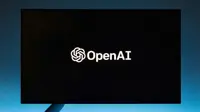GST rollout: key facts
01 Jul 2017
The Goods and Services Tax (GST), ushered in at midnight last night – the country's biggest tax reform since Independence, catapults India into a select league of nations that have a national sales tax.
The one national GST unifies the 1.3-billion-strong country and its $2 trillion economy into a common market.
The GST will eliminate the cascading effect of the current multi-layered tax system as well as the state-level taxes by fixing the final tax rate.
The GST is the most disruptive of taxation reforms, intended to completely transform the indirect taxation landscape in the country across the nation – both central and state.
However, GST, which will pave the way for realisation of the goal of `One Nation-One Tax-One Market,' will be administered jointly by the centre and the states.
GST will benefit all stakeholders, including industry, government and consumer. It will lower the cost of goods and services, give a boost to the economy and make the products and services globally competitive, giving a major boost to 'Make in India' initiative.
The GST regime seeks to reduce rates of over 50 per cent of items of daily use and charge others at much lower rate of 5 per cent, 12 per cent and 18 per cent.
A higher tax rate is imposed on luxury and sin goods at 28 per cent in the new regime. Certain services like telephone, banking and insurance are expected to feel the pinch of higher taxes.
The GST also promises taxpayers a refund against their sales within 60 days. Similarly, exporters will get refund within seven days. For protection of consumer rights, the new law provides anti-profiteering provisions. In a departure from the normal practice, the GST will be administered together by the Centre and the states.
Under the GST regime, exports will be zero-rated in entirety unlike the present system where refund of some of the taxes does not take place due to fragmented nature of indirect taxes between the centre and the states.
GST will make India a common market with common tax rates & procedures and remove economic barriers.
GST is largely technology driven and will reduce the human interface to a great extent.
GST is expected to improve ease of doing business in India.
The list of services under GST include:
http://www.cbec.gov.in/resources//htdocs-cbec/gst/Schedule%20of%20GST%20...
The following link gives item-wise GST rates:
http://www.cbec.gov.in/resources//htdocs-cbec/gst/chapter-wise-rate-wise...
To know item-wise cess rates click on the following link:
http://www.cbec.gov.in/resources//htdocs-cbec/gst/gst-compensation-cess-...































